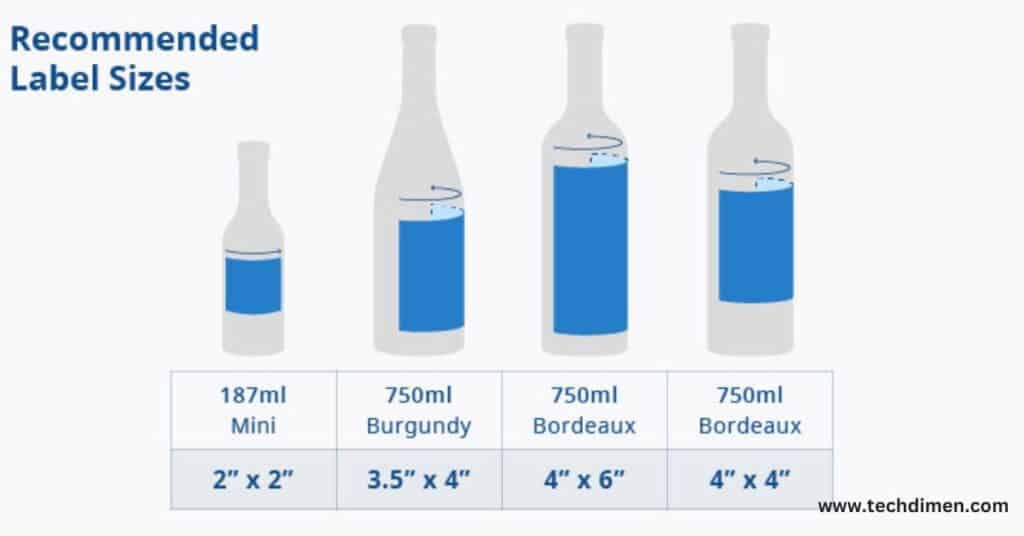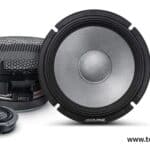The conversion of 750 ml to oz is more than just a number game. It’s about knowing how to apply it in cooking, shopping, health, and even travel. Whether you’re measuring wine, water, or wellness products, this guide breaks it all down clearly.
What Is 750 ml in Ounces?
In the United States, 750 milliliters equals 25.36 US fluid ounces. If you’re using UK measurements, it converts to about 26.4 imperial fluid ounces.
Quick Conversion Facts

This difference exists because the US fluid ounce (29.5735 ml) and the UK imperial fluid ounce (28.4131 ml) aren’t equal. So, always double check which system you’re using.
| Measurement | Milliliters (ml) | Ounces (oz) |
|---|---|---|
| US Fluid Ounces | 750 ml | 25.36 oz |
| UK Fluid Ounces | 750 ml | 26.4 oz |
Absolutely! Here’s a detailed breakdown of the section “What Is 750 ml in Ounces?”, expanded with additional subheadings, contextual information, and examples fully optimized for engagement and clarity, following your tone and writing guidelines.
The Quick Answer: 750 ml Equals 25.36 US Fluid Ounces
If you’re measuring in US fluid ounces, 750 milliliters equals 25.36 oz.
This is the most common conversion used in recipes, product packaging, and nutrition labels in the United States.
Formula Used:750 ÷ 29.5735 = 25.36 US fl oz
What If You’re Using Imperial (UK) Measurements?

If you’re in the UK or using a British cookbook, the Imperial fluid ounce applies.
In this case, 750 ml is equal to approximately 26.40 UK fluid ounces.
Formula Used:750 ÷ 28.4131 = 26.40 UK fl oz
Why It Matters: Mixing up the two systems can ruin recipes, underdose medication, or cause overpours when serving drinks.
the Difference Between Milliliters and Ounces
- Milliliter (ml): A metric unit of volume, commonly used around the world.
- Fluid Ounce (oz): A unit from the imperial system. The US and UK define it differently:
- US fluid ounce: 1 fl oz = 29.5735 ml
- UK (Imperial) fluid ounce: 1 fl oz = 28.4131 ml
Important: They may sound the same but are not interchangeable.
Conversion Chart: 750 ml in Ounces at a Glance
| Measurement System | 750 ml in Fluid Ounces |
|---|---|
| US Fluid Ounces | 25.36 oz |
| UK Fluid Ounces | 26.40 oz |
Keep this chart handy when following recipes, especially if they don’t clarify which system they use.
Why 750 ml Is a Common Size

You’ve probably seen 750 ml more often than you realize. It’s the standard volume for many everyday products:
- A standard wine bottle contains 750 ml.
- Many spirits like vodka, rum, and whiskey are sold in 750 ml bottles (also known as a “fifth”).
- Reusable water bottles, kitchen sauces, personal care products, and cleaning liquids often come in 750 ml sizes.
That’s why knowing what 750 ml means in ounces can save you guesswork whether you’re at the store, cooking, or tracking your water intake.
Visualizing 750 ml in Practical Terms
If you’re struggling to picture 750 ml, here’s how it stacks up in real-world equivalents:
- Just over 3 cups (US)
- About 5 standard glasses of wine (at 5 oz per glass)
- A little more than 1.5 US pints
Knowing the conversion helps when splitting drinks, prepping meals, or distributing products evenly.
Real-Life Example: 750 ml Wine Bottle
A standard bottle of wine is always 750 ml. When you pour a standard 5 oz glass:
750 ml ÷ 5 oz = ~5 glasses of wine
This matters when you’re meal planning, hosting, or managing servings at a bar or restaurant.
Why This Conversion Matters in Daily Life

- Cooking Recipes: Prevents under or over-measuring ingredients
- Health & Nutrition: Helps track fluid intake and calculate servings
- Buying Products: Understand value by comparing price per ounce
- Travel: Airline liquid limits often use milliliters
- Fitness: Portion your hydration during workouts accurately
How to Convert 750 ml to Ounces (US & UK)
The Exact Math: Conversion Formulas for ml to fl oz
To convert milliliters (ml) to fluid ounces (oz), divide the volume by the correct conversion factor. There are two formulas depending on whether you’re using the US fluid ounce or the UK (Imperial) fluid ounce.
US Fluid Ounces:
Formula:
Fluid Ounces (US) = Milliliters ÷ 29.5735
Example:750 ÷ 29.5735 = 25.36 fl oz (US)
UK Fluid Ounces:
Formula:
Fluid Ounces (UK) = Milliliters ÷ 28.4131
Example:750 ÷ 28.4131 = 26.40 fl oz (UK)
This small difference matters more than you’d think, especially in cooking, baking, and measuring medication.
Quick Reference Table for Converting 750 ml to Ounces
| Unit System | Conversion Factor | Result for 750 ml |
|---|---|---|
| US Fluid Ounce | 29.5735 | 25.36 oz |
| UK Fluid Ounce | 28.4131 | 26.40 oz |
If you’re in the US, always use 29.5735. If you’re in the UK or following a British recipe, stick with 28.4131.
When to Use US vs UK Ounce Conversions
- Use US ounces if:
You’re in North America, using American recipes, fitness apps, or buying US-made products. - Use UK ounces if:
You’re following British or Commonwealth recipes, product labels, or health measurements.
Mixing them up could mean dry brownies, watery sauces, or off-kilter nutritional tracking.
Manual vs Digital Conversions: Which Is Better?

Manual Conversions:
Great for quick math if you’re used to working with numbers.
Grab a calculator or use your phone and apply the formula.
Online Tools:
Fast, free, and accurate. Try:
Mobile Apps:
Use converters built into apps like:
- MyFitnessPal (for hydration and nutrition)
- Kitchen Calculator
- Convert Units
These tools help you switch between units on the fly without mental math.
Pro Tip: Round for Simplicity When It’s Safe
In informal cooking or daily hydration, you can round 750 ml to:
- 25 oz (US)
- 26 oz (UK)
This makes mental calculations easier without affecting everyday outcomes. Just avoid rounding when precision is crucial—like in baking, dosing medicine, or mixing chemicals.
Visual Conversion for Everyday Use

750 ml is roughly:
- 3.17 US cups
- 1.58 US pints
- 0.79 US quarts
- Just over 25 ounces
Having a visual comparison chart next to your stove, water bottle, or fitness tracker can save time and guesswork.
Let me know if you’d like me to move on to the next section:
“750 ml in Real Life (Kitchen, Fitness, Household)”
Or would you like this section formatted into a graphic for your blog?
Real-Life Context: Why 750 ml to oz Matters
Cooking and Food Preparation
In cooking and food prep, converting 750 ml to ounces for a recipe can be the difference between success and confusion. International recipes often use milliliters. The oz equivalent of 750 ml is used in items like a standard wine bottle, which holds 25.36 ounces. Bottles of olive oil, vinegar, or marinades also frequently come in this volume. For precise cooking, especially in baking or gourmet recipes, knowing the exact volume in fluid ounces is important.
Household and Daily Use
Understanding 750 ml in ounces helps with common household tasks. A 750 ml water bottle is ideal for daily hydration and easy to carry. Many shampoos, conditioners, body washes, and household cleaners come in 750 ml bottles. This is also the volume used for baby formula mixes and pet liquids where exact measurements matter.
Health and Fitness
In fitness and wellness routines, tracking fluid intake is essential. Knowing that 750 ml equals 25.36 oz helps ensure you’re meeting hydration goals, usually around 64 ounces per day. Smoothies, protein shakes, or electrolyte drinks are often portioned in 750 ml servings.
“Knowing exactly how much fluid you’re consuming makes all the difference in fitness consistency,” says Registered Dietitian Jane Simmons.
Here’s a rich, detailed, SEO optimized section for your blog titled:
In the Kitchen: Recipes, Bottles, and Better Cooking
750 ml = 25.36 US fluid ounces, which is almost exactly one standard bottle of wine.
That’s important because:
- Wine bottles: Whether you’re serving guests or cooking with it, knowing that 750 ml equals 25.36 oz helps with portioning.
- Imported recipes: Many recipes outside North America use milliliters. Misjudging 750 ml could throw off the flavor or texture of a dish.
- Oils, vinegars & sauces: Bottled in 750 ml sizes especially olive oil and soy sauce so conversions help with measuring out tablespoons or cups accurately.
Example:
A vinaigrette recipe might call for 250 ml of oil exactly ⅓ of a 750 ml bottle. If you know the total in ounces, it’s easier to scale and measure.
Health, Hydration & Fitness Goals
Water bottles, sports drinks, and protein shakes are often sold in 750 ml containers. Knowing how many ounces that is helps you:
- Track daily water intake: 750 ml = 25 oz. So drinking three bottles means you’ve already hit 75 oz of water—a good hydration benchmark.
- Log nutrition accurately: Fitness apps often ask for oz, not ml. If your pre-workout bottle says 750 ml, that’s 25.36 oz to enter into your tracker.
- Stay on goal: Whether it’s electrolytes, supplements, or hydration, this conversion keeps you aligned with health plans that use imperial measurements.
Household Products & Cleaning Supplies
You’ll find 750 ml containers for everything from:
- Dish soap
- All-purpose cleaners
- Liquid laundry detergents
- Window sprays
If a label suggests using “1 ounce per gallon of water,” knowing that your bottle contains 25.36 oz helps you budget usage and avoid waste.
Personal Care & Toiletries
Shampoos, conditioners, lotions, and body washes often come in 750 ml bottles, especially when bought in bulk or salon sizes. Understanding the oz equivalent lets you:
- Compare value when buying in different regions (ml vs oz labeling)
- Follow dosage instructions that refer to oz
- Pack smarter for travel, especially if you’re flying and need to stay within TSA liquid limits (max 3.4 oz per container!)
Liquor & Spirits: The Classic 750 ml Bottle
When someone says “a fifth of liquor,” they’re referring to a 750 ml bottle, which is exactly:
- 25.36 US fluid ounces
- Roughly 17 standard 1.5 oz shots
Understanding this can help with:
- Cocktail planning
- Event prep
- Safe serving guidelines
Medical & Pharmaceutical Uses
In health care, precision is critical. IV fluids, liquid medications, and nutritional supplements are often labeled in ml but dosed in ounces (or vice versa). If a prescription says “take 1 ounce,” but you’re using a product labeled in ml, that conversion ensures safety.
International Travel, Packaging & Online Shopping
If you shop across borders or travel internationally, you’ve likely noticed this:
- US products use oz
- European and Canadian goods use ml
Knowing 750 ml = 25.36 oz helps you understand:
- How much you’re really buying
- How many servings to expect
- Whether two products are truly the same size
This matters when comparing unit prices, choosing the right luggage, or even shipping products.
Bottom Line: It’s Everywhere
Whether you’re making a vinaigrette, prepping your gym bag, or pouring a glass of wine, 750 ml shows up constantly. Being able to convert it to ounces instantly saves time, prevents mistakes, and helps you shop, cook, measure, and live more confidently.
Everyday Scenarios Using 750 ml to Oz
At the Bar: Wine, Liquor, and Cocktails
A 750 ml wine bottle typically yields about five servings of five-ounce glasses. This size is also common for vodka, whiskey, rum, and other liquors. Since cocktail recipes often specify measurements in ounces, converting 750 ml ensures accurate pours whether you’re mixing drinks at home or bartending professionally.
Travel and TSA Guidelines
When flying, liquid limits are strict. TSA regulations allow only 3.4 ounces of liquid per container in carry-on luggage. Since 750 ml equals just over 25 ounces, it must be packed in checked luggage. Understanding this helps avoid problems at the airport.
Medical and Pharmaceutical Applications
In the medical field, syrups, mouthwashes, liquid vitamins, and IV fluids are labeled in milliliters. Accurately converting 750 ml to oz is crucial to ensure correct dosing. Pharmacists, caregivers, and patients all benefit from knowing these conversions.
1. Cooking and Food Preparation
When you’re cooking, precise measurements are crucial for the success of your recipe. Whether you’re following a recipe from a different country or experimenting with new dishes, knowing how to convert 750 ml to oz helps you maintain the right balance of ingredients.
- Wine in Recipes: Many recipes call for wine or other liquids in milliliters, but if you don’t have a metric scale, knowing that 750 ml equals 25.36 oz allows you to substitute a standard bottle of wine (which is usually 750 ml) easily.
- Liquid Measurements: Many sauces, oils, or broths come in 750 ml bottles. Converting it to ounces helps you calculate the right amount for your cooking needs, whether you’re measuring for a large family meal or adjusting for portion sizes.
2. Health and Fitness
In the realm of health and fitness, hydration plays a vital role. 750 ml is a common size for fitness drinks, water bottles, and even certain meal replacements. Here’s how understanding this conversion can be valuable:
- Hydration Tracking: If you are tracking how much water you drink throughout the day, knowing that 750 ml is roughly 25.36 oz helps you keep track of your intake. For example, many people aim to drink at least 64 oz of water a day. Knowing that 750 ml equals about 25.36 oz helps you figure out how many bottles you need to hit that goal.
- Pre/Post-Workout: Fitness drinks and sports beverages often come in 750 ml containers. Converting this to ounces ensures that you’re not overdoing it or under-consuming the necessary amount of fluid to support your workout.
3. Shopping and Packaging
Whether you’re shopping for drinks, toiletries, or household products, understanding 750 ml to oz conversions can save you time and confusion. Here’s why:
- Buying Drinks: Many beverage bottles, like soft drinks, sparkling water, and juice, come in 750 ml sizes. Knowing this translates to 25.36 oz allows you to make quicker decisions when comparing different bottle sizes in the store. It also helps in recognizing which size offers the best value.
- Household Products: Household items like cleaning solutions or air fresheners sometimes come in 750 ml containers. Understanding the ounces equivalent helps you measure how much you’re using or how long it will last. For example, a 750 ml bottle of cleaner might be the right size for a small apartment but too large for a single room.
4. Wine and Liquor Bottles
One of the most common uses of 750 ml is in wine bottles, and it’s important to know how it translates to ounces when serving or purchasing wine:
- Wine Serving: A standard bottle of wine is typically 750 ml or 25.36 oz. If you’re hosting a dinner party and want to serve wine, knowing this helps you plan the number of bottles you’ll need depending on how many people are attending.
- Spirits and Liquor: Liquor bottles, especially in the US, also tend to come in 750 ml sizes, which are referred to as “a fifth.” This knowledge is helpful for both purchasing and mixing drinks, especially when following specific cocktail recipes.
5. Pet Care Products
Not only humans benefit from the 750 ml measurement, but many pet care products are also packaged in this size. Whether it’s liquid supplements or pet shampoo, understanding the 750 ml to oz conversion helps with dosing and purchasing:
- Pet Shampoo: If you have a large pet and need to buy shampoo or conditioner, many brands offer 750 ml bottles, which are 25.36 oz. Knowing this conversion helps you estimate how much you’ll need based on your pet’s size and fur condition.
- Pet Supplements: Some liquid supplements for pets come in 750 ml bottles. Converting to ounces ensures that you’re administering the correct dosage.
6. Medical and Pharmaceutical Uses
In medical scenarios, accuracy is critical, and understanding measurements like 750 ml to ounces can be crucial, particularly in dosage calculations:
- Intravenous Fluids: 750 ml might be the typical amount for certain IV fluids used in hospitals. Understanding the oz equivalent ensures that medical staff is administering the right amount of fluids in situations like hydration or medication infusion.
- Liquid Medications: Many liquid medications or nutritional supplements come in 750 ml bottles. Knowing this translates to 25.36 oz can help both patients and healthcare providers accurately measure and administer the correct doses.
7. International Travel and Shopping
When traveling abroad, especially in countries using the metric system, knowing the 750 ml to oz conversion helps you navigate shopping and daily tasks:
- Product Labels: In countries where the metric system is used, many products like beverages or toiletries may be sold in 750 ml sizes. Knowing that this equals 25.36 oz can prevent confusion, especially when comparing it with other items sold in ounces in the US.
- Duty-Free Shopping: While traveling, you might come across alcohol or cosmetics packaged in 750 ml sizes at duty-free shops. Understanding the conversion ensures that you’re not overpaying or misjudging the amount you’re purchasing.
In Summary
Understanding 750 ml to oz conversions provides clarity and practicality in everyday situations, from cooking to shopping to health. Whether you’re buying a bottle of wine, hydrating during a workout, or carefully following a recipe, this simple conversion can improve your decision-making. Knowing that 0.75 liters equals approximately 25.36 oz helps you understand how much you’re consuming or using, making your day-to-day tasks easier and more efficient.
Visualizing 750 ml Common Product Comparisons
A standard wine bottle, a large shampoo bottle, a reusable sports water bottle, a fifth of vodka, and a bottle of premium olive oil all typically hold0.75 liters or 25.36 oz. This helps give a clear, real-world understanding of this volume.
| Product | Volume |
|---|---|
| Standard Wine Bottle | 750 ml / 25.36 oz |
| Shampoo Bottle | 750 ml / 25.36 oz |
| Sports Water Bottle | 750 ml / 25.36 oz |
| Vodka Bottle (Fifth) | 750 ml / 25.36 oz |
| Olive Oil Bottle | 750 ml / 25.36 oz |
750 ml to Ounces Conversion Chart
This conversion chart helps compare similar measurements in both US and UK fluid ounces.
| Milliliters (ml) | US Fluid Ounces (oz) | UK Fluid Ounces (oz) |
|---|---|---|
| 100 ml | 3.38 oz | 3.52 oz |
| 250 ml | 8.45 oz | 8.8 oz |
| 500 ml | 16.91 oz | 17.6 oz |
| 750 ml | 25.36 oz | 26.4 oz |
| 1000 ml (1 liter) | 33.81 oz | 35.2 oz |
This makes it easier when comparing or substituting amounts in recipes, shopping for liquids, or checking product labeling.
Why 750 ml to Ounces Is Crucial
Knowing the 750 ml to oz conversion isn’t just trivia. It’s everyday knowledge for cooks and bakers using international recipes, travelers managing bottle sizes, fitness lovers tracking hydration, and healthcare professionals managing fluid dosages.
Common Questions Answered
Many people ask if 750 ml is a fifth, and the answer is yes. A fifth of liquor in the U.S. is equal to 750 ml or 25.36 ounces. In terms of cups, 750 ml is roughly 3.17 US cups. For tablespoons, it equals about 50.7 US tablespoons. When pouring wine, expect around five 5-ounce glasses from a 750 ml bottle.
1. Precision in Cooking and Baking
When you’re preparing meals, especially those that involve liquids like sauces, soups, or dressings, the amount of liquid you use can make or break your dish. Many recipes, particularly from Europe or other metric-system countries, list measurements in milliliters (ml). If you don’t know that 750 ml equals 25.36 oz, you could easily end up using too much or too little of a key ingredient. This is especially important in recipes where balance is key, like in baking or crafting cocktails.
- Wine in Recipes: For example, a recipe that calls for 750 ml of wine is equivalent to one standard bottle, or 25.36 oz. If you’re unsure of the conversion, you might end up using a whole bottle more than necessary or, conversely, not enough.
- Consistency in Flavor: In cooking, the difference between getting the measurement just right versus a bit off can drastically alter the outcome of the dish. Knowing the correct conversion helps ensure you’re using the right amounts.
2. Hydration Tracking and Health
Keeping track of your daily water intake is a popular way to maintain your health and wellness. The typical recommendation is to drink around 64 oz of water per day. If you’re using a 0.75 liters water bottle, which is 25.36 oz, it’s easy to track how much you’ve consumed. For instance, knowing that you need about 2.5 bottles of 0.75 liters to reach the daily goal makes it simple to stay on track.
- Fitness Drinks: Post-workout drinks or sports beverages often come in 70.75 liters bottles. Understanding that this is roughly 25.36 oz can help you manage your intake, especially if you’re calculating calories or nutrients.
- Tracking Calories: For those who monitor their calorie or water intake, understanding the exact amount you’re drinking in ounces helps you stay within your targeted goals. For instance, a 0.75 liters serving of water is about 25.36 oz, and if you’re following a structured hydration plan, this detail helps you stay consistent with your plan.
3. Shopping and Product Comparison
When shopping, particularly in countries using the imperial system, it’s easy to confuse milliliters with ounces. That’s why knowing that 750 ml equals 25.36 oz is crucial for making informed purchasing decisions.
- Choosing the Right Size: Many drinks, like juices, sodas, or sparkling water, are sold in 0.75 liters bottles. Without knowing the conversion, you might accidentally choose a larger or smaller bottle than you intended. For example, understanding that 750 ml = 25.36 oz ensures you’re getting the right amount for your needs, whether you’re shopping for a single serving or for an entire meal.
- Value for Money: By understanding the exact conversion, you can compare the value of products more effectively. If you’re looking at two bottles of a drink, one in 0.75 liters and another in 1 liter, knowing their ounce equivalents helps you quickly determine which is a better buy.
4. Medication and Medical Applications
In the medical field, accuracy is everything. Liquid medications, IV fluids, and other medical dosages often require precise measurements. Understanding the 750 ml to oz conversion can be a lifesaver in these situations.
- Correct Dosage: Some prescription liquids or over-the-counter medicines are packaged in 0.75 liters bottles, and the conversion to oz helps ensure the proper dosage is given, particularly when you’re managing doses for children or pets.
- Fluid Intake Monitoring: Hospitals often use 750 ml to measure the amount of fluids given intravenously. Knowing the ounces equivalent ensures that healthcare professionals are administering the correct amount of fluid.
5. International Travel and Imported Goods
Traveling to countries that use the metric system can be challenging if you’re not familiar with milliliters. Many products abroad, from drinks to toiletries, are measured in ml, so understanding the 750 ml to oz conversion can help you navigate shopping and packaging more confidently.
- Product Labeling: If you’re shopping for beverages or beauty products abroad, knowing that 750 ml = 25.36 oz lets you easily identify whether the product matches your expectations. This is especially helpful in duty-free shops or international supermarkets where product sizes may vary from what you’re used to.
- Packing for Travel: When packing for a trip, liquid restrictions (especially in hand luggage) can be tricky. Knowing that 0.75 liters is just over 25 oz helps you stay within airport regulations, avoiding issues with oversized liquids.
6. Wine, Spirits, and Alcohol
Alcohol, particularly wine, is often sold in 0.75 liters bottles. If you don’t know how this converts into ounces, you could be caught off guard, especially when trying to divide or serve the wine.
- Wine Bottles: A 0.75 liters bottle of wine is exactly 25.36 oz, which is the standard wine bottle size. If you’re hosting a party or meal and you need to serve wine, this information helps you calculate how much wine each guest will get and how many bottles you’ll need.
- Liquor Purchases: Many liquors, especially in the US, are packaged in 0.75 liters or “fifth” bottles. Understanding the ounce measurement helps you calculate the number of servings or mixers you’ll need for cocktails.
(FAQs) About 750 ml to Ounces
1. How many ounces is 750 ml?
750 ml is equivalent to 25.36 US fluid ounces. If you’re using the UK imperial system, it would be 26.40 ounces.
2. How do I convert 750 ml to ounces?
To convert 750 ml to US fluid ounces, divide the milliliters by 29.5735.
Formula:
750 ml ÷ 29.5735 = 25.36 ounces (US)
For UK fluid ounces, divide by 28.4131.
Formula:
750 ml ÷ 28.4131 = 26.40 ounces (UK)
3. What is a 750 ml bottle of wine in ounces?
A 750 ml bottle of wine is 25.36 oz in the US system and 26.40 oz in the UK system. This is the standard size for wine bottles worldwide.
4. Is 0.75 liters equal to a fifth of liquor?
Yes, 750 ml is the same as a fifth of liquor. The term “fifth” refers to a0.75 liters bottle, which is standard for liquor bottles in the United States.
5. How many cups is 750 ml?
There are about 3.17 cups in 0.75 liters. Since one cup is equivalent to 237 ml, you can divide 750 by 237 to get the result.
6. How many tablespoons are in 750-ml?
There are about 50.7 tablespoons in 750 ml. Since one tablespoon is equivalent to 14.79 ml, divide 750 by 14.79 to get the exact measurement.
7. How many ounces in 750 ml of water?
750 ml of water is exactly 25.36 US fluid ounces and 26.40 UK fluid ounces. This is true because 1 ml of water equals 1 gram, and the conversions for liquid volume are the same.
8. Can I use 750 ml instead of a quart?
No, 750 ml is slightly more than a quart. A quart is 946.35 ml, so 750 ml is about 3/4 of a quart.
9. Why is it important to convert 750 ml to ounces?
Understanding the conversion between 750 ml and ounces is important for cooking, managing fluid intake, comparing products, and following accurate measurements for health, hydration, and recipes.
10. Can I use an online calculator to convert 0.75 liters to ounces?
Yes, there are several online calculators available that can help you convert 0.75 liters to ounces quickly and accurately, such as Metric-Conversions.org or RapidTables.
Final Thoughts on 750 ml to Oz
0.75 liters in ounces is essential whether you’re pouring wine, cooking a new dish, or prepping a health drink. It simplifies international conversions and helps with accurate measurement in daily life.
Refer to the conversion chart, remember the difference between US and UK fluid ounces, and use this guide to measure confidently. Whether in the kitchen, at the pharmacy, or during a workout, accurate fluid conversions matter.
Bookmark this page for future reference or print the chart and keep it handy in your kitchen or workspace.

Jhon AJS is a tech enthusiast and author at Tech Dimen, where he explores the latest trends in technology and TV dimensions. With a passion for simplifying complex topics, Jhon aims to make tech accessible and engaging for readers of all levels.







